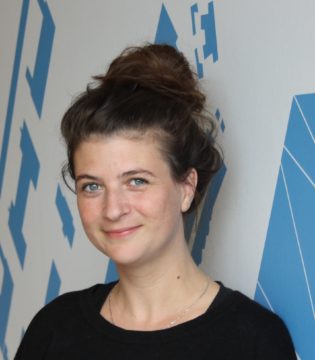A TECHNICAL-ADMINISTRATIVE INFRASTRUCTURE FOR MANAGING VALUE IN CIRCULAR NETWORKS
This Community of Practice (COP) — an interdisciplinary open learning space — was different from all other projects I have been doing so far. We didn’t study a specific circular problem this time, but we studied a solution: a platform for circular business networks with the aim to grow the circular economy. This may sound easy, it was far from easy!
In a circular economy, assets are no longer sold. Rather, assets are collectively serviced by circular service (CISE) networks, comprising all stakeholders involved in keeping an asset functioning. This requires unprecedented levels of cooperation and coordination, with high administrative costs and the need for trust and transparency in the network. Redesigning business processes towards cooperation and transparency diametrically opposes the business logic we are used to.
Cooperation and transparency diametrically oppose the business logic we are used to
We found out that the use of distributed ledger technology (DLT) could be useful for our desired outcome of coordinating transactions, the provenance of assets throughout their lifecycle, automatic execution of payments and providing trust in the network. However, (1) if there is no wish for providing services (e.g. repair, upgrades) directly on the asset (rather via an intermediary ) or (2) there is no need for handling many micropayments to be distributed over a network of participants, conventional database technologies might apply.
The starting point of our COP was a Proof-of-Concept (POC) developed by Rabobank, that fully automates the payment administration of assets that are offered in a pay-per-use proposition, such as cars (pay per km driven), and milk robots (pay per litre of milk). This seemed to fit our pilot case study of Bundles very well. Bundles is a circular company that provides its customers with the service of ‘clean laundry’, by providing them a durable washing machine and charging them per washing cycle. Bundles is in need for new financial structures and administrative tools to grow its business.
In addition to its basic functionality of automatically charging end-users for using an asset (e.g. per washing cycle), the COP introduced several other features:
- The automatic distribution of the paid use fees to network participants to compensate for servicing the asset. This enables service providers to engage with the assets, without a central party to coordinate;
- A transparent ledger containing information regarding revenues that are generated by a specific asset. This enables a clear division of rights and obligations regarding collateral and cashflows;
- Micropayments (smaller then €0,01) against low cost. This makes high volumes of transactions with small amounts affordable;
- Accessibility for anyone contributing to a circular economy, stimulating circular competition and lower prices;
- Community-ownership and maintenance by the CISE network participants. This allows the proceeds to be distributed amongst the CISE network rather than creating rents for the platform;
- The ability for all network participants, including end-users, to co-finance assets or innovations. Repayments are based on generated use fees, leading to new types of circular financial products;
- A governance structure of the platform in the so-called code of conduct. This covers rules governing: (a) the eligibility of access to the platform, (b) the rights and obligations regarding the management of the platform (and corresponding legal entity), (c) decision-making processes, and (d) constitutional arrangements.
The technical infrastructure we developed is meant for scaling circular initiatives. Commercial benefits should therefore not come from the maintenance of the infrastructure but from the circular business activity that is facilitated by it. It is therefore essential that the CISE Platform is open-source, not-for-profit and community-maintained.
However, a private, permissioned, DLT system was chosen, to fit the experimental phase we are in. Although the platform inherently places incentives for circularity, minimal eligibility criteria needed to be introduced to ensure the circular character of the platform. Also, sub-optimal design choices were necessary to ensure privacy. A roadmap will be developed to work towards an optimal architecture. For the interested reader, choices regarding technical design configurations can be found in the white paper.
A general problem with these types of projects is that they come with high implementation and maintenance costs. Moreover, viability of the project is still uncertain. Additionally, expert knowledge on software architecture is needed to be able to assess the related development risks.
We do believe, however, that such a platform could be transformational to the circular economy, enabling CISE networks in a wide array of sectors. To realize this potential requires tremendous effort, dedication and cooperation. We have taken the first steps, but a long path still lies ahead. The support of many is crucial to its success. We invite anyone that is interested in being part of the circular economy to join our network and engage with us in future developments.
Further reading:
- White paper: The Circular Service Platform
- Master Circular Business With The Value Hill
- 6 Guidelines To Empower Financial Decision-Making In The Circular Economy
- Create A Financeable Circular Business Model
Would like to join or want more information, contact Elisa Achterberg at e.achterberg@uu.nl.


